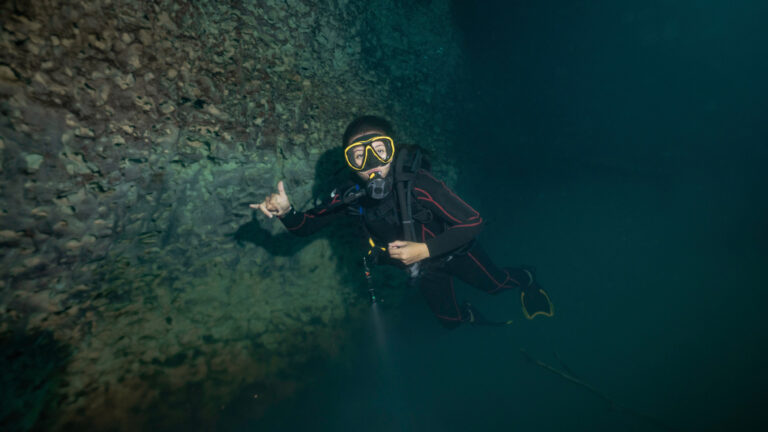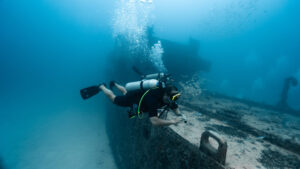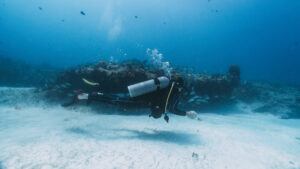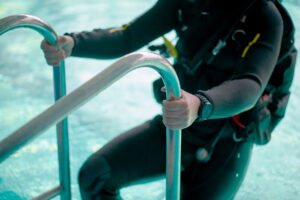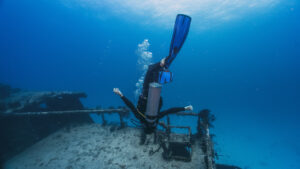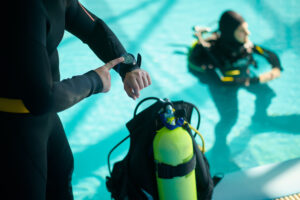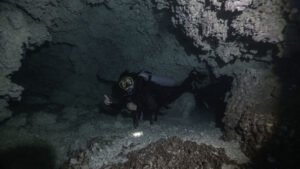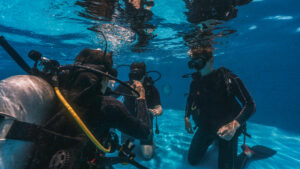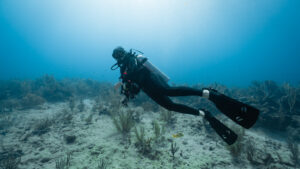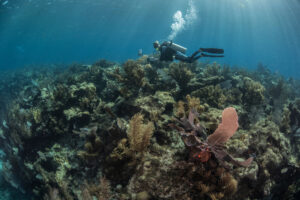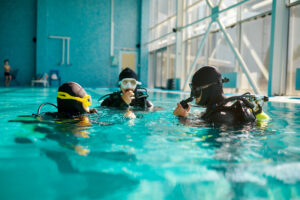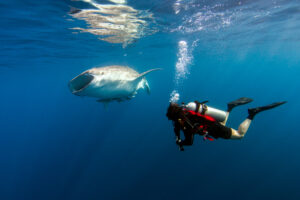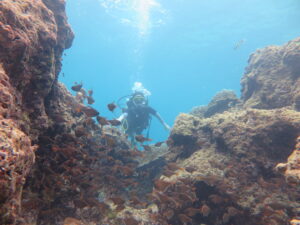What is a Valsalva Maneuver?
The Valsalva Maneuver, named after Antonio Maria Valsalva, the 17th-century Italian physician who first described it, is a technique commonly used by scuba divers to equalize middle ear pressure during a dive. This maneuver is vital for maintaining ear health and comfort while diving, as failure to equalize pressure can lead to a painful condition known as “barotrauma.”
Anatomical Background
To understand the Valsalva Maneuver’s importance, one must first comprehend the ear’s anatomy. The ear consists of three sections: the outer ear, the middle ear, and the inner ear. The Eustachian tube, a narrow passage connecting the middle ear to the back of the throat, plays a critical role in the Valsalva Maneuver. The tube, naturally closed, opens when we swallow, yawn, or perform the Valsalva Maneuver, allowing air to pass from the throat to the middle ear, equalizing pressure on either side of the eardrum.
The Importance of Pressure Equalization
Pressure equalization in the middle ear is crucial when diving. As a diver descends, water pressure increases, resulting in a higher pressure outside the ear than within the middle ear. This pressure differential can cause discomfort, pain, and in severe cases, damage to the eardrum, or barotrauma. The Valsal ava Maneuver aids in avoiding such problems by helping to balance the pressure.
Performing the Valsalva Maneuver
To perform the Valsalva Maneuver, a diver pinches their nostrils shut, sealing the nose, and gently blows through the nose. This action increases the pressure in the back of the throat, forcing open the Eustachian tubes and allowing air to flow into the middle ear, equalizing the pressure.
This maneuver should be performed frequently during descent, ideally before experiencing discomfort. If discomfort arises, the diver should ascend slightly to reduce pressure, then try the Valsalva Maneuver again. It’s important to remember that the action should be gentle – forceful blowing can cause harm.
Other Equalization Techniques
While the Valsalva Maneuver is the most commonly taught and used method for middle ear pressure equalization, other techniques may also be used. These include the Toynbee Maneuver (pinching the nose and swallowing), Frenzel Maneuver (pinching the nose and making a sound like the letter “k”), and the Edmonds Technique (a combination of Valsalva and Frenzel). Divers may find that certain methods work better for them than others, and it can be useful to be familiar with multiple techniques.
Precautions and Potential Risks
Although the Valsalva Maneuver is generally safe, it is not without potential risks. Forceful or excessive use of the maneuver can lead to problems such as barotrauma, round window rupture, or even a potentially dangerous condition called arterial gas embolism. Therefore, it is crucial to perform the maneuver gently and only as needed.
Moreover, divers with a cold or sinus congestion may find it difficult to perform the Valsalva Maneuver due to blocked Eustachian tubes. In such cases, diving is usually not recommended, as the inability to equalize pressure can lead to severe ear pain and potential injury.
Key Takeaways
The Valsalva Maneuver is a critical technique for any scuba diver, essential for maintaining comfort and preventing ear injury while diving. While it is generally safe and effective, divers must be aware of the potential risks associated with incorrect or excessive use. With proper training and practice, divers can utilize this maneuver to ensure a safe and enjoyable diving experience.

